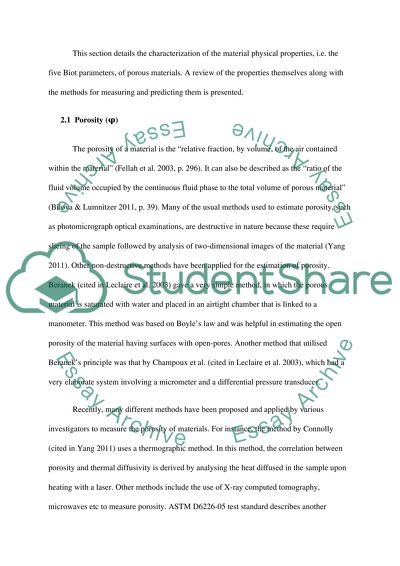Characterisation material physical properties of porous materials Article. Retrieved from https://studentshare.org/engineering-and-construction/1400789-characterisation-material-physical-properties-of
Characterisation Material Physical Properties of Porous Materials Article. https://studentshare.org/engineering-and-construction/1400789-characterisation-material-physical-properties-of.


